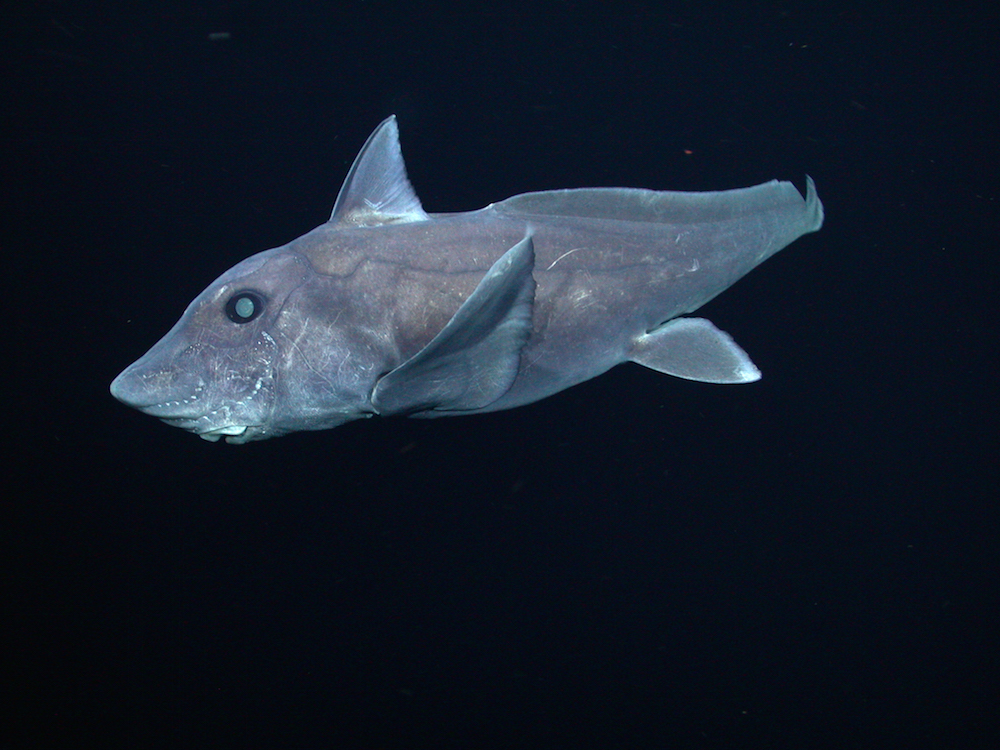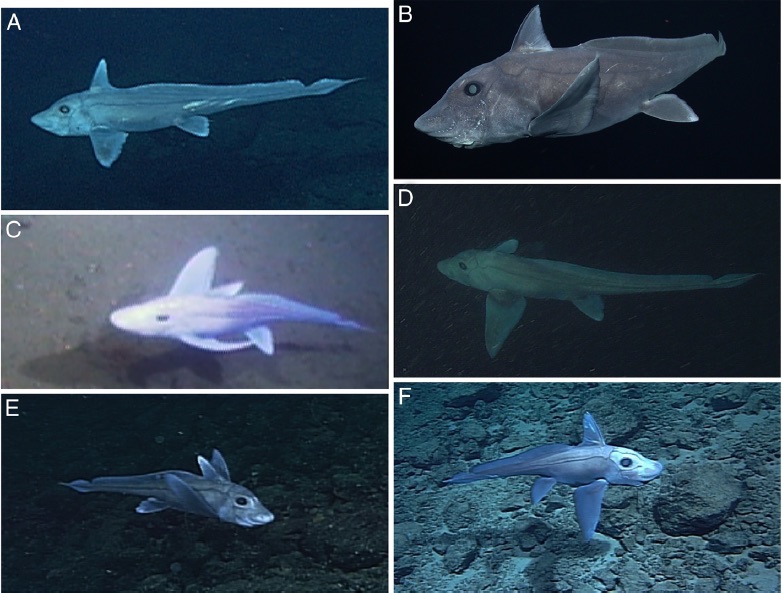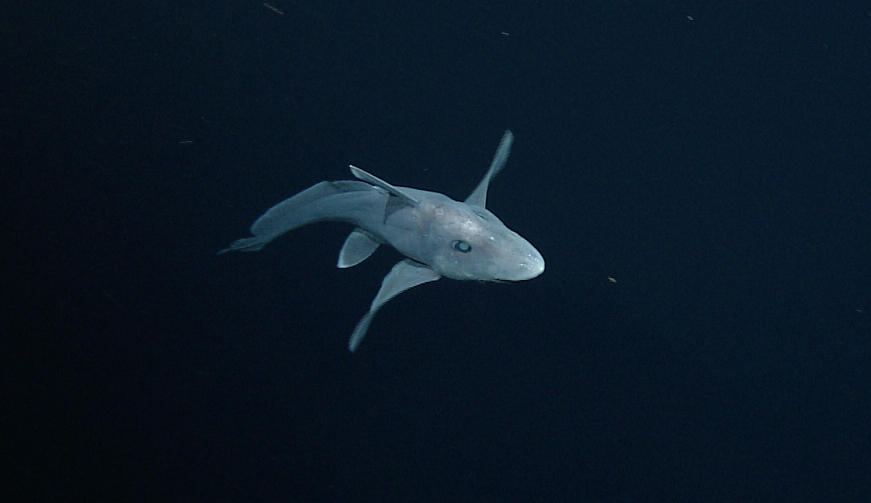Mysterious 'Ghost Shark' Found for 1st Time in Northern Hemisphere

An elusive "ghost shark" has come out of hiding, as video has captured footage of the fish — whose face looks as if it were stitched together in a Frankenstein-like manner — for the first time in the Northern Hemisphere.
"It's a bizarre-looking fish with a pointed snout," said Lonny Lundsten, a senior research technician at Monterey Bay Aquarium Research Institute (MBARI) in California. "It has a long, pointed, tapering tail, relatively large eyes, [and] it's almost entirely grayish-blue."
The rare, deep-sea fish — called a "ghost shark" for its appearance, but also known as the pointy-nosed blue ratfish — made its video debut after researchers recorded the animal via remotely operated underwater vehicles (ROVs) off the coasts of Hawaii and California. The videos, six in all, provide the first evidence that this species of ratfish lives in the Northern Hemisphere, Lundsten told Live Science. [See Photos of the Bizarre Fish and Other Freaky-Looking Fish]
The videos were taken between 2000 and 2007, but it was only in October that researchers published the findings in the journal Marine Biodiversity Records, said Lundsten, who co-authored the study with two of his colleagues.
The first three videos, taken in 2000, were recorded before scientists had even identified the fish. It wasn't until 2002 that another group of scientists introduced the species to the scientific world, publishing in the journal Cybium. They named the fish Hydrolagus trolli in honor of Ray Troll, an Alaskan science illustrator who often draws marine animal discoveries.
Despite naming the newfound species, researcher Dominique Didier, a professor of biology at Millersville University in Pennsylvania, had never seen a live specimen. Instead, she and her colleague studied 23 dead H. trolli specimens caught as bycatch by trawlers (deep-sea fishing boats that catch marine animals with large nets) in the southwestern Pacific Ocean. These fish were all found in the Southern Hemisphere off the coasts of Australia, New Zealand, New Caledonia, and the Lord Howe Rise (a deep-sea plateau) and Norfolk Ridge formations, Lundsten said.
But Didier did get a chance to see the MBARI videos and confirmed that the fish in the footage with wing-like fins were likely H. trolli, Lundsten said.
Get the world’s most fascinating discoveries delivered straight to your inbox.
Fishy videos
Little is known about H. trolli, because it lives so deep underwater — between 1 mile and 1.3 miles (1,640 to 2,063 meters) under the surface, Lundsten said. Luckily, the videos have helped the researchers gather more clues about these ghost sharks, which measure between 2 feet and 3 feet (0.6 to 0.9 m) long.
For instance, the videos show H. trolli swimming over a rocky seafloor, rather than soft sediment, "which is unusual for ratfishes," Lundsten said. "[Ratfishes] are typically found above soft sediment, and the fact that these live in a rocky habitat is unique to this group."
Lundsten added that H. trolli's Frankenstein-like stiches are actually sensory organs that cover the fish's entire body, especially its face. These organs can sense minute movements and vibrations in the surrounding water, which helps the fish hunt prey, said Dave Ebert, who co-authored the study with Lundsten and Amber Reichert, a graduate student of marine science at California State University (Cal State). Ebert is also the program director of the Pacific Shark Research Center at Cal State's Moss Landing Marine Laboratories.
In addition, male ratfish "have a strange sexual-related organ that's on the top of their head," Lundsten said. "It's a club-shaped thing that has spines on it, and it's used for grasping and better positioning the female during copulation." [The 9 Weirdest Animal Penises]
Ratfish history
Ratfishes have cartilaginous skeletons, indicating they're related to rays and sharks. Just like their relatives, ratfishes have a long history. Paleontologists have found ratfish fossil remains dating from about 350 million to 375 million years ago, showing that the fishes predate the dinosaur age, Didier told Live Science in March 2016.
Earlier this year, another type of ratfish, known as a knifenose chimaera (Harriotta raleighana), caught the public's attention when one ended up in the bycatch of a fishing boat off the coast of Nova Scotia, Canada.
Moreover, there are likely more unknown ratfish out there, Ebert said. Since 2002, researchers have discovered 19 new ratfish species, including the Pacific black ghost shark (Hydrolagus melanophasma), captured on video in the Gulf of California, Mexico, by MBARI in 2003.
Original article on Live Science.

Laura is the managing editor at Live Science. She also runs the archaeology section and the Life's Little Mysteries series. Her work has appeared in The New York Times, Scholastic, Popular Science and Spectrum, a site on autism research. She has won multiple awards from the Society of Professional Journalists and the Washington Newspaper Publishers Association for her reporting at a weekly newspaper near Seattle. Laura holds a bachelor's degree in English literature and psychology from Washington University in St. Louis and a master's degree in science writing from NYU.





